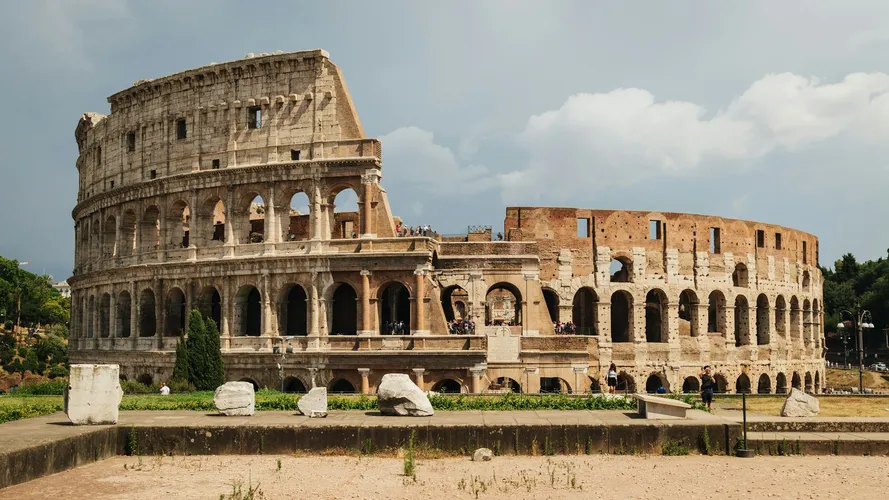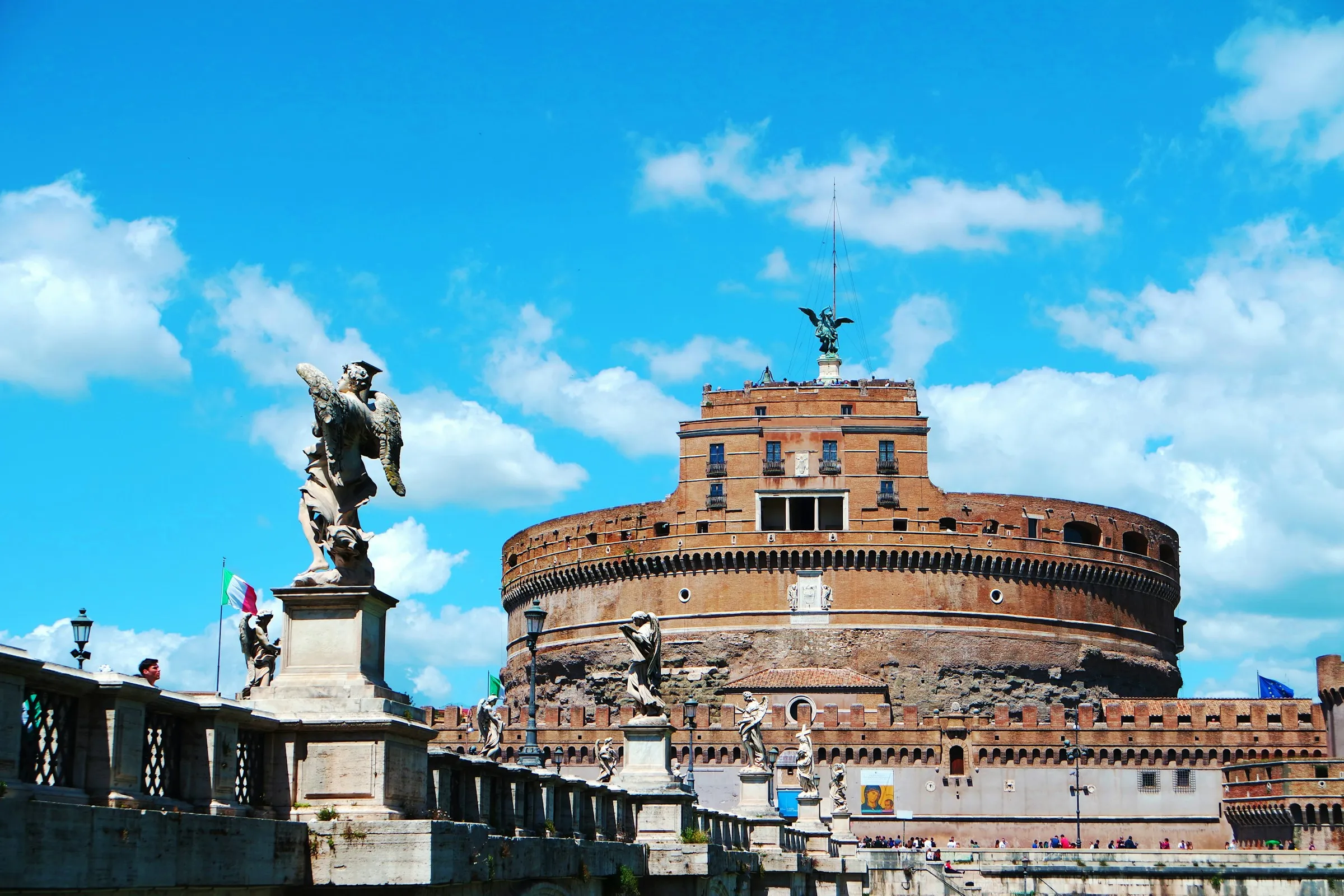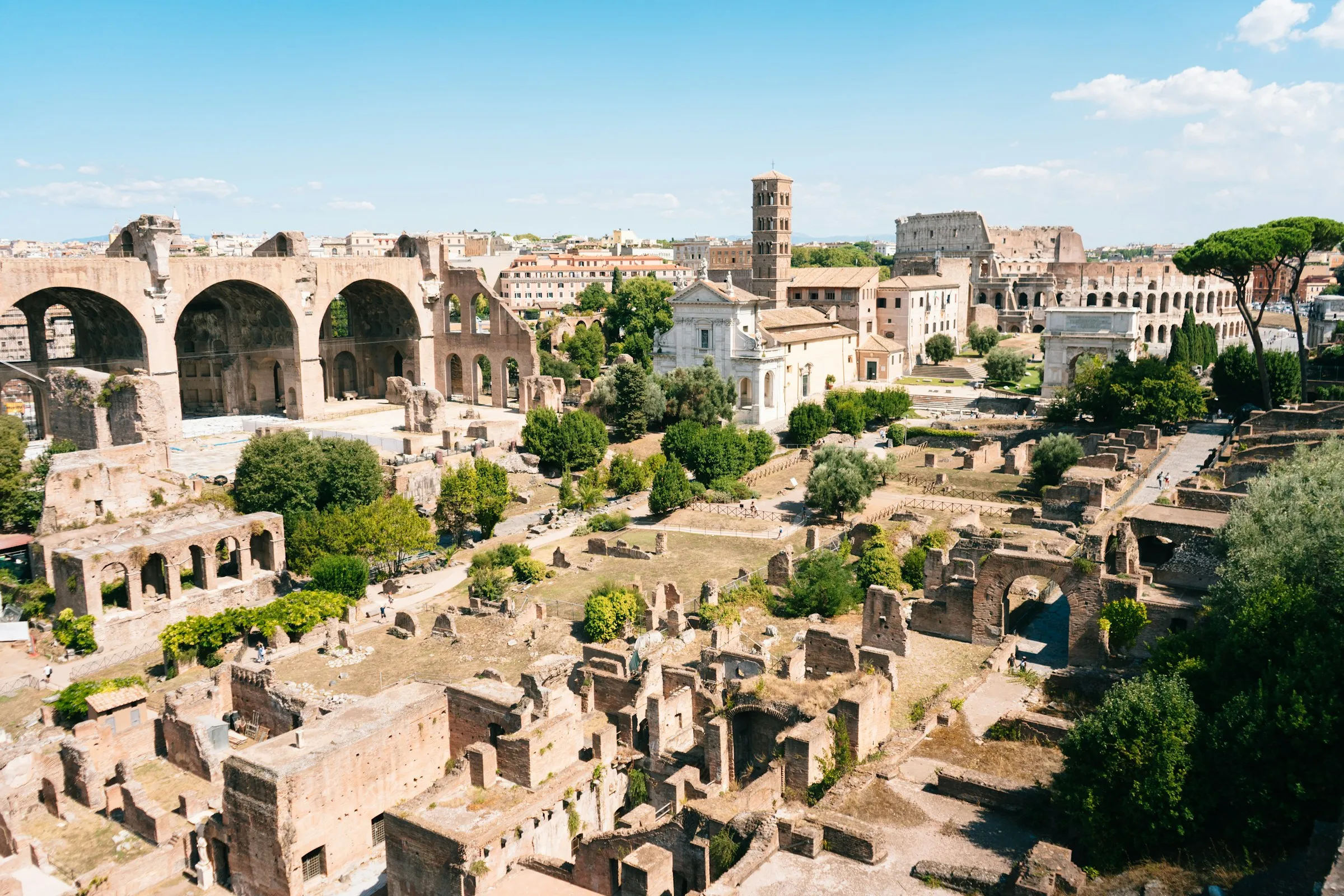The Colosseum, a symbol of Rome, is an ancient amphitheater built during the Roman Empire and recognized as a UNESCO World Heritage Site. Completed nearly 2,000 years ago, this massive structure was the center of entertainment, hosting gladiator battles and grand spectacles. Today, it stands as one of the most popular tourist attractions in Rome, offering visitors a glimpse into its rich history and cultural significance. This guide explores the Colosseum’s fascinating history, must-see highlights, and practical information for your visit.
Basic Information About the Colosseum
The History of the Colosseum
Construction of the Colosseum began around 70 CE under Emperor Vespasian and was completed in 80 CE by his son Titus. Officially known as the Flavian Amphitheater, it hosted gladiatorial games and even mock naval battles. The construction was funded by spoils from the Siege of Jerusalem, with many Jewish prisoners forced into labor to build this monumental structure.
Architectural Features
The Colosseum is an elliptical structure measuring 187.5 meters in length, 156.5 meters in width, and 48 meters in height. It could accommodate between 50,000 and 87,000 spectators. Its design features different architectural styles on each level: Doric columns on the ground floor, Ionic on the second floor, and Corinthian on the third and fourth floors. It also had a retractable canopy system to provide shade for spectators.
UNESCO World Heritage Status
In 1980, the Colosseum was inscribed as part of the “Historic Centre of Rome” UNESCO World Heritage Site. This designation also includes nearby landmarks such as the Roman Forum and the Arch of Constantine.
Highlights of the Colosseum
The Arena Where Gladiators Fought
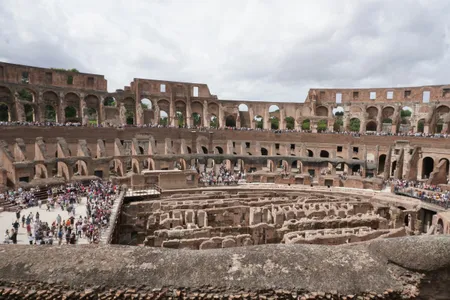
The arena was where gladiators battled for their lives. Its vastness is awe-inspiring even today. The original floor is gone, exposing the underground chambers where elevators and cages were used to transport animals and fighters to the arena.
The Underground Complex
The underground area housed cages for wild animals, storage rooms for equipment, and manually operated elevators. This complex system allowed for seamless transitions during events and showcases ancient Roman engineering ingenuity.
The Tiered Seating System
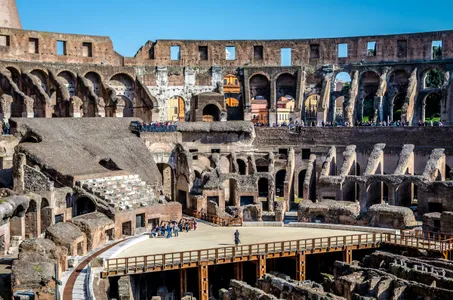
Seating in the Colosseum reflected Roman society’s hierarchical structure. Nobles sat on the ground floor while common citizens occupied the middle tiers. Slaves and lower-class individuals were relegated to the uppermost levels. This arrangement offers insight into ancient Rome’s social stratification.
Visiting Tips and Estimated Time
Ticket Information
Tickets can be purchased from the official website:
- FULL EXPERIENCE Ticket: Includes access to both the Colosseum and Roman Forum. Visitors can explore these sites either on the same day or within three days (24 euros).
- 24H Ticket: Grants same-day access to both sites (18 euros).
- FULL EXPERIENCE UNDERGROUND/ATTIC Tickets: These include all benefits of FULL EXPERIENCE tickets plus access to either underground chambers or upper levels (24 euros each).
Important Notes:
- Tickets require a specific entry time slot; visitors must enter during their designated time.
- FULL EXPERIENCE UNDERGROUND/ATTIC tickets are highly sought after and sell out quickly—early booking is recommended.
- Entry to the Roman Forum is permitted only once per ticket with no re-entry allowed. Plan your visit accordingly if you intend to see both sites on the same day. The Colosseum is not located within the Roman Forum, so it’s advisable to schedule your Colosseum visit either early or late in the day.
Entry Process
Visitors enter through the west side of the plaza area. Tickets are scanned at entry points followed by a security check.
Recommended Duration
A typical visit takes about 1–2 hours. Guided tours may require additional time.
How to Get There
The easiest way to reach the Colosseum is via Metro Line B (blue line) at “Colosseo” station, just a few minutes’ walk away. Buses and taxis are also convenient options.
Tips for Visiting the Colosseum
- Visit early in the morning or late afternoon to avoid crowds.
- Bring a hat and water during summer months as it can get very hot.
- Always purchase tickets from official sources to avoid scams.
- Be cautious near entry points where pickpockets or aggressive vendors may operate.
Nearby Attractions Around the Colosseum
- Trevi Fountain: A stunning Baroque fountain famous for its coin-tossing tradition.
- Spanish Steps: Iconic steps featured in Roman Holiday.
- Castel Sant’Angelo: A historic site offering panoramic views from its rooftop museum.
